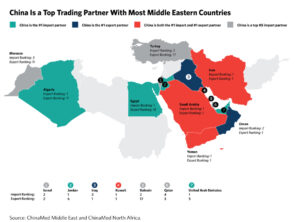In the international system, one action can have far reaching consequences, and the intended objectives do not necessarily define the resulting outcomes. The 2003 U.S.-led invasion of Iraq is a perfect example of this occurrence.
Originally intended to remove suspected weapons of mass destruction, among other objectives, the invasion itself was rather short in duration: the period from the initial “shock and awe” campaign to the securitization of coalition control was just over a month and a half. The impacts, however, were anything but abbreviated. From this one war, the Gulf Region was transitioned into bipolarity, opened to further outside interference, and destabilized to the point that new extremist groups were not only founded but able to establish significant footholds.
But how did this all happen? How did one military engagement transform a region, and what does this mean for the future of the Gulf?
The easiest facet to address is the change in polarity. Prior to the invasion, the Gulf was locked in tripolarity between Iraq, Iran, and Saudi Arabia (Gause 2012). This distribution of capabilities, although generally known for instability, remained the status quo even following the Gulf War as mutual threat perception remained high. Generally speaking, the Gulf represented a regional security complex in which all three states were primarily worried about each other rather than outside threats (Gause 2012). The Invasion of Iraq effectively changed this reality, triggering regime collapse and opening the door to new actors.

Photo by Gilles Bassignac, Accessed via https://www.newyorker.com
Beginning with the former, by removing the Ba’th party, the U.S. coalition essentially dismantled the Iraqi government, leaving the state to rebuild from the ground up. During this period, the armed forces were also disbanded, removing any military capability and eliminating any influence Iraq may have maintained in the region. Put simply, Iraq was, in one fell swoop, knocked out of the great power competition in the Gulf. Even after the establishment of a constitution and the election of a new government, decentralization of power and sectarian conflict ensured Iraqi leadership was too focused on domestic concerns to rebound to prior regional standing.
The implications of this geopolitical change are evident today. Iran and Saudi Arabia are now locked in an ongoing rivalry, both sides seeking to establish regional hegemony (Gause 2012). Iraq, on the other hand, has been left vulnerable. Without strong capabilities, it is unable to deter outside powers from interfering in state interest, and its neighbors often influence politics and sponsor non-state actors to exert control in Iraq.
Addressing the latter implication of the shift in geopolitical reality, the Iraq war also opened the door to increasing influence from outside actors.
Following the 2003 invasion, public support for the United States in the Arab region declined significantly. There were also questions of the U.S. ability to ensure regional security. These factors, combined with the desire of some states to return to a multipolar international system, encouraged renewed interest in the region on the part of both Russia and China.
Today, China has signed strategic partnerships and memoranda of understanding with almost all states in the region, furthering economic and diplomatic ties. Russia, on the other hand, has increased arms sales as well as its military presence. Overall, both states have been able to further their interests in the region, triggering great power competition and weakening prior security dynamics. Moving forward, it is not unimaginable that China may, in the future, surpass U.S. eminence- an eventuality that would have serious implications for the global security structure and preservation of U.S. interests.
Finally, but no less importantly, the invasion of Iraq produced widespread instability, the consequence of which was the rise of new and dangerous extremist groups.
As was already mentioned, the Ba’th party was not simply removed, it was entirely dismembered. In the wake of this destruction and without military supervision, more sparsely populated regions of Iraq (those outside coalition supervision) were left in a place of instability. From such regions, ISIS and later IS was born.
Today, the Islamic State is one of the deadliest terrorist organizations in the world, and its focus on the “near enemy” continually jeopardizes the stability of the region. Since 2017, this threat has somewhat lessened, but resurgence remains an ongoing concern. Additionally, there is lingering fear IS may turn its attentions toward the West, threatening the security of the United States and its allies.
So at the end of the day, the invasion of Iraq had implications stretching far beyond what was initially anticipated. Rather than neutralizing a threat by removing WMDs or promoting the spread of democracy, the war actually served to further destabilize the region- as evident by the ongoing power struggles, involvement of outside actors, and continuing challenges arising from revisionist extremist groups. In this way, the 2003 war teaches an important lesson to the international community: limited objectives do not equate limited impacts.



Leave a Reply